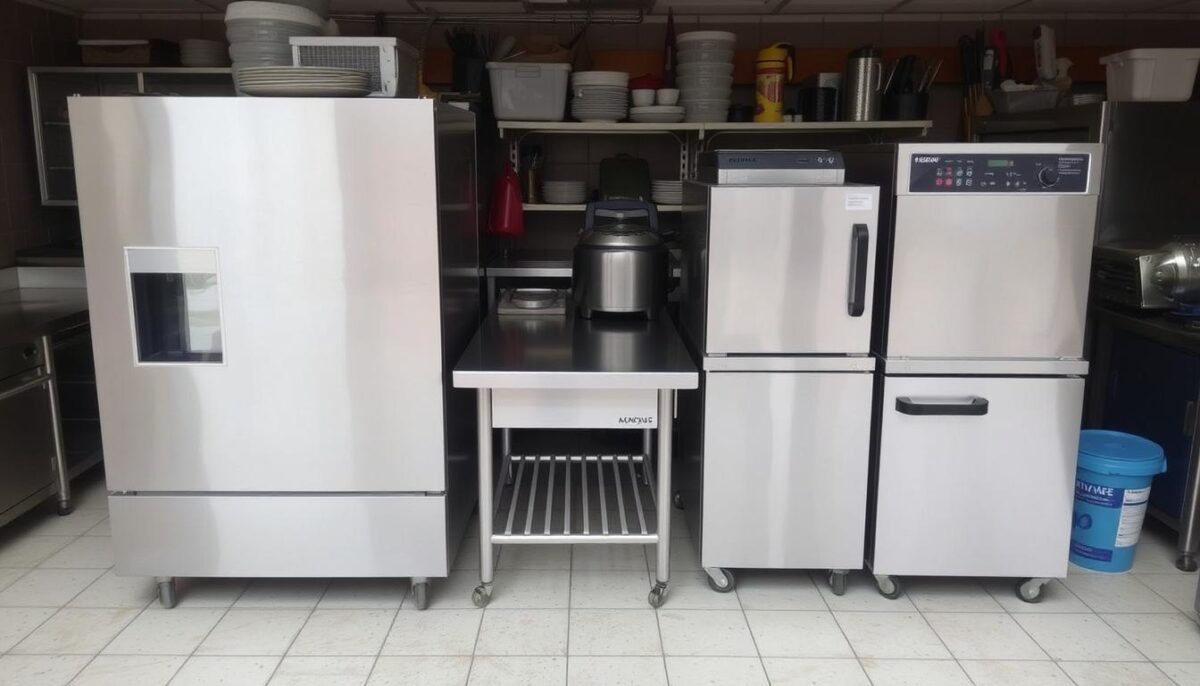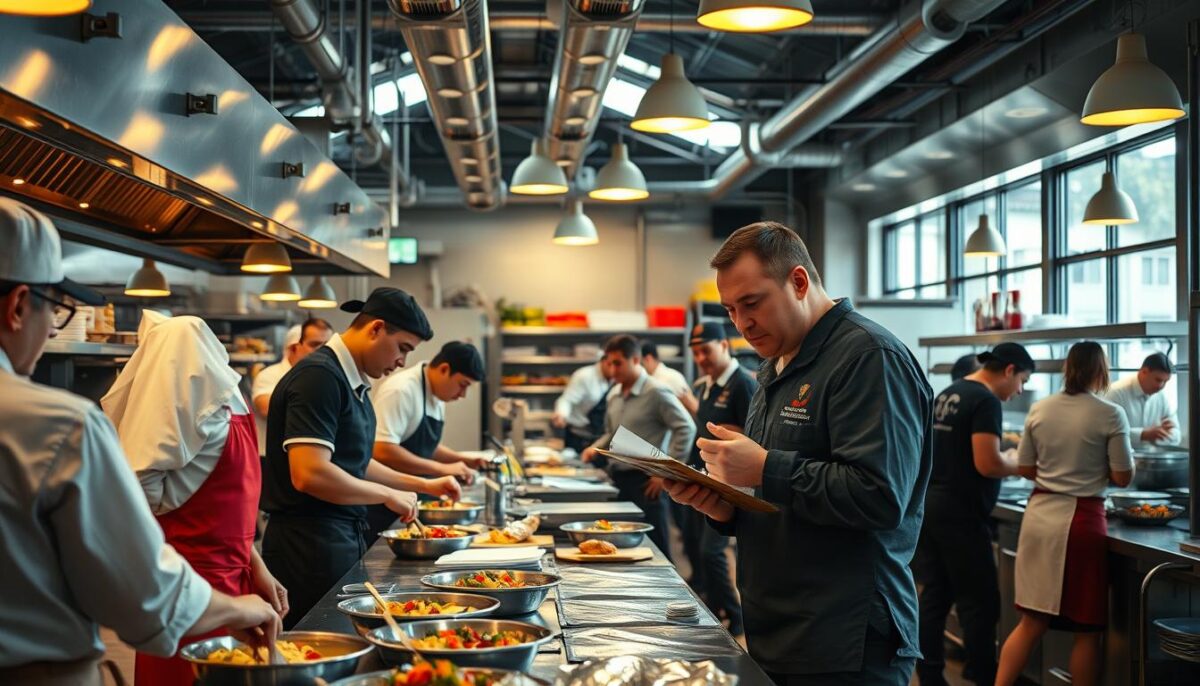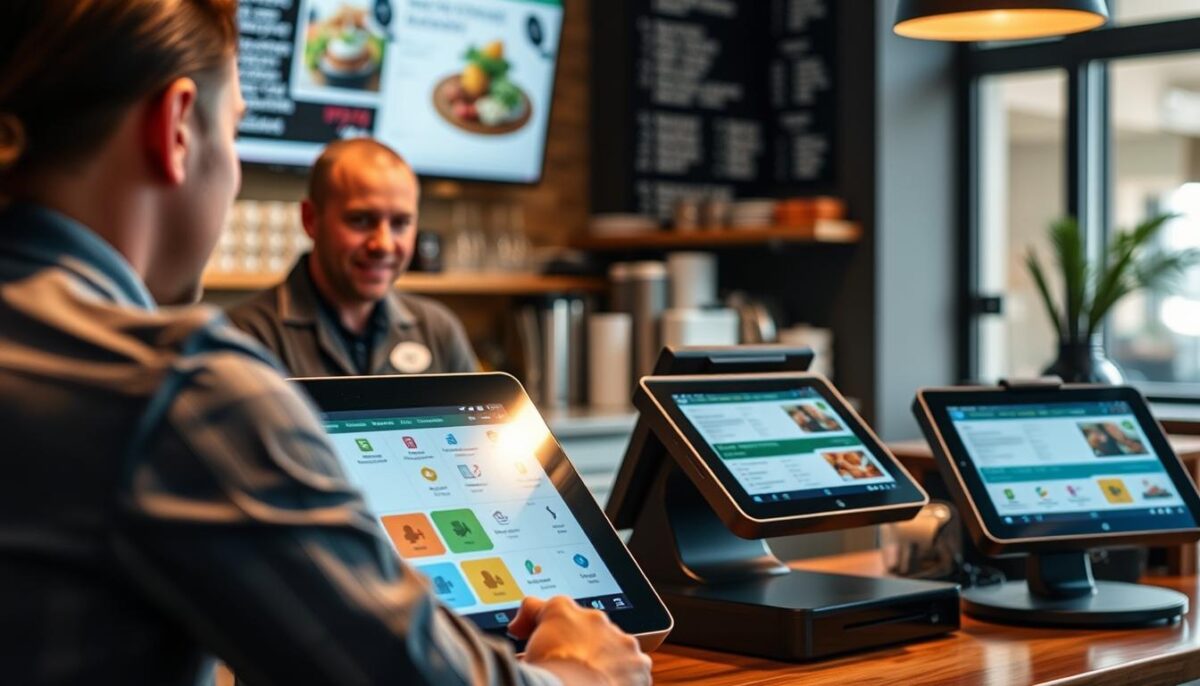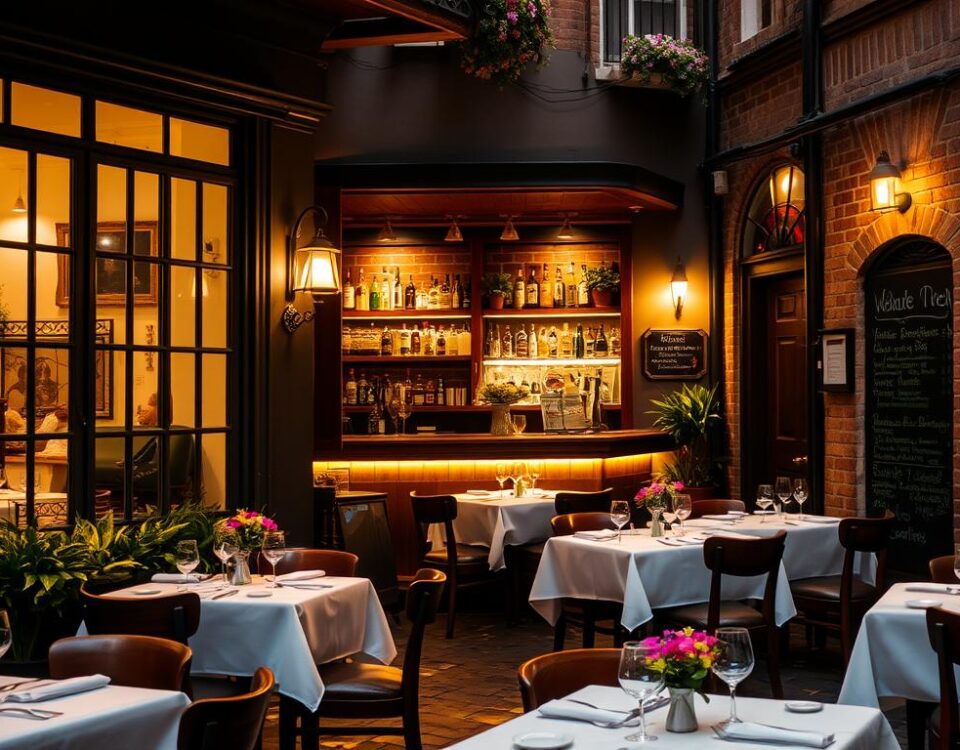
Restaurant Financing 101: Which Option Is Right for You?
August 11, 2025
The Most Common Mistakes When Opening Your First Restaurant
August 12, 2025Starting a restaurant business can be a daunting task, especially when working with a limited budget. However, the stories of renowned restaurateurs like Howard Schultz, who transformed the coffee culture with Starbucks, and René Redzepi, who redefined fine dining with Noma, prove that success is not solely dependent on initial investment.
Did you know that many successful restaurant owners began their journeys with little more than a dream and determination? For instance, Schultz came from humble beginnings, yet his relentless drive revolutionized the industry. These stories inspire and motivate aspiring restaurateurs to pursue their culinary dreams despite financial constraints.
As someone who has navigated the challenges of opening a restaurant on a tight budget, I’m here to share valuable insights and strategies that can help you achieve success in the competitive food industry. With careful planning and creativity, it’s possible to launch a thriving business without breaking the bank.
Key Takeaways
- Understanding the key challenges of opening a restaurant on a limited budget.
- Learning how to maximize your budget through strategic planning.
- Discovering creative ways to reduce startup costs without compromising quality.
- Gaining insights into the experiences of successful restaurateurs who started with limited funds.
- Developing a comprehensive approach to launching a successful restaurant business.
The Reality of Starting a Restaurant Business
The reality of starting a restaurant business is far more complex than many aspiring owners anticipate. Unlike businesses with substantial capital, entrepreneurs without funds must rely heavily on resourcefulness and innovation to secure essential resources like kitchen space, staff, and inventory.
Understanding the Restaurant Industry Challenges
The restaurant industry is fraught with challenges, from high failure rates to thin profit margins. Many new owners are caught off guard by the demanding reality of long hours and the financial strain of maintaining a restaurant. Understanding these challenges is crucial to preparing for the battle ahead.
Some of the specific challenges unique to budget-conscious restaurant startups include resource limitations and competitive disadvantages. For instance, without a significant budget, it’s difficult to invest in premium locations or state-of-the-art equipment. Here’s a breakdown of common challenges faced by new restaurant owners:
| Challenge | Description | Impact |
|---|---|---|
| Resource Limitations | Limited financial resources restrict investments in quality equipment and marketing. | Competitive disadvantage |
| High Failure Rates | Many restaurants fail within the first year due to various reasons. | Financial loss and reputational damage |
| Thin Profit Margins | Profit margins in the restaurant industry are typically low. | Requires careful financial management |
Setting Realistic Expectations
Setting realistic expectations is vital when starting a restaurant business on a tight budget. This includes understanding the timeline to profitability, the personal sacrifice required, and the importance of mental preparation and resilience. It’s not just about serving good food; it’s about running a sustainable business.
By understanding the challenges and setting realistic expectations, aspiring restaurant owners can approach their venture with clear eyes and strategic planning. This doesn’t mean giving up on the dream but rather being prepared for the realities of the restaurant industry.
Building Your Restaurant Vision on a Budget
A well-defined restaurant vision is the foundation upon which a successful business is built, regardless of budget constraints. As Jasmine Moy, a seasoned hospitality lawyer, advises, identifying a niche that resonates with your target audience is key to standing out in the competitive restaurant industry.
Defining Your Restaurant Concept
Defining your restaurant concept is the first step towards creating a unique identity for your business. This involves determining the type of cuisine, atmosphere, and service style that will set your restaurant apart. Moy suggests that whether it’s a menu based on a single ingredient, a fusion of unexpected cuisines, or a commitment to sustainability, your concept should reflect what makes your restaurant unique.
- Develop a distinctive restaurant concept that stands out without requiring excessive funding.
- Conduct market research on a budget to ensure your concept fills a genuine need in your target area.
- Align your menu, atmosphere, and service style with your concept while keeping costs manageable.
By focusing on a specific niche, you can maximize your limited resources and create a memorable dining experience. For instance, a restaurant might focus on vegan cuisine or locally sourced ingredients to attract a dedicated customer base.
Creating a Comprehensive Business Plan
Once your restaurant concept is defined, the next step is to create a comprehensive business plan. This plan should outline your target market, operational strategy, and cost-effective marketing approaches. According to Moy, a strong business plan is essential for securing additional funding and guiding your restaurant towards success.
“Success in the restaurant business hinges on standing out. Whether it’s a menu based on a single ingredient, a fusion of unexpected cuisines, or a commitment to sustainability, identifying a niche that resonates with your target audience is key.” – Jasmine Moy
A comprehensive business plan will serve as your roadmap, helping you navigate the challenges of the restaurant industry while staying within your budget. It should include detailed financial projections, marketing strategies, and operational plans.
- Create a business plan that outlines your target market and operational strategy.
- Develop cost-effective marketing approaches to reach your target audience.
- Regularly review and adjust your business plan to adapt to financial realities.
How to Open a Restaurant on a Budget: Starting Small
Launching a restaurant on a tight budget requires creativity and a willingness to start small. When financial constraints are a barrier, alternatives like food trucks, pop-ups, or cloud kitchens offer low-cost entry points into the restaurant industry.
Food Trucks as Low-Cost Entry Points
Food trucks allow you to reach diverse customers without the expense of a brick-and-mortar location. With lower overhead costs and built-in marketing opportunities, food trucks are an attractive option for starting small. The mobility of food trucks also enables you to test different locations and events, helping you identify the most profitable spots for your restaurant concept.
Pop-Up Restaurants and Cloud Kitchens
Pop-up restaurants can test your concept in a real-world setting, generating buzz and customer feedback while keeping overheads low. Cloud kitchens, on the other hand, enable you to focus solely on food preparation and delivery, cutting out the costs associated with dining spaces and décor. These models allow you to experiment with your concept, refine your offerings, and build a loyal customer base without a significant upfront investment.
Testing Your Concept Before Full Investment
Starting small with food trucks, pop-ups, or cloud kitchens allows you to test your restaurant concept before making a full investment. This approach enables you to make mistakes and refine your concept when the stakes are lower, ultimately saving you money and reducing the risk of failure. By starting small, you can create a successful restaurant on a budget.
Securing Funding for Your Restaurant Dream
Securing funding is a crucial step in turning your restaurant dream into a reality. The initial startup costs for a restaurant can vary significantly based on factors like location, size, and concept.
To maximize your chances of securing the necessary funds, it’s essential to present a detailed and compelling business plan. This plan should outline your restaurant concept, target market, projected financials, and growth strategy. I’ve found that a well-structured business plan not only helps in securing funding but also serves as a roadmap for your business.
Traditional Financing Options
Traditional financing options, such as small business loans or lines of credit from banks, are popular among restaurateurs. Many lenders offer Small Business Administration (SBA) loans with lower interest rates and favorable terms, making them an attractive option for first-time entrepreneurs. When exploring traditional financing, it’s crucial to understand the pros and cons of each option.
- SBA loans offer lower interest rates and longer repayment terms.
- Personal loans can provide quick access to capital but may have higher interest rates.
- Lines of credit offer flexibility in managing cash flow.
Creative Funding Alternatives
Beyond traditional financing, there are creative alternatives that can help fund your restaurant. Equipment financing, vendor credit, and partnership arrangements are some options to consider. For instance, equipment financing allows you to acquire necessary kitchen equipment without a significant upfront cost.

Crowdfunding Your Restaurant Concept
Crowdfunding is another viable option for raising funds for specific aspects of your restaurant. By creating an engaging campaign, you can attract supporters who believe in your concept. Crowdfunding not only provides capital but also helps in building a community around your restaurant.
To successfully crowdfund your restaurant, focus on creating a compelling narrative about your business, highlighting what makes your concept unique, and offering attractive rewards to your backers.
Maintaining good personal credit is crucial when seeking any type of financing for your restaurant. By combining multiple funding sources and presenting a solid business plan, you can secure the money needed to turn your restaurant dream into a successful business.
Minimizing Startup Costs Without Sacrificing Quality
As I navigated the challenges of starting a restaurant on a limited budget, I discovered that cost-cutting measures didn’t have to compromise quality. The key is to be strategic about where to save and where to invest.
To achieve this balance, it’s essential to prioritize essential expenses. This involves distinguishing between necessary costs and discretionary spending. For instance, investing in quality ingredients and essential equipment is crucial, while décor and non-essential items can be scaled back.
Prioritizing Essential Expenses
When opening my restaurant, I focused on allocating funds to areas that directly impacted the customer experience and operational efficiency. This meant spending on reliable kitchen equipment and skilled staff, while finding cost-effective solutions for other needs.
| Expense Category | Essential? | Cost-Saving Measures |
|---|---|---|
| Kitchen Equipment | Yes | Buy second-hand or lease |
| Décor | No | Repurpose or DIY projects |
| Staffing | Yes | Train efficiently, hire part-time |
Areas Where You Can Cut Corners
Identifying areas to cut costs without impacting quality is vital. This can include negotiating with vendors, phasing purchases, and leveraging community support. For example, involving friends and family in the startup process can help reduce labor costs.
By being resourceful and making informed decisions, it’s possible to minimize startup costs while maintaining the quality that customers expect. This strategic approach allows restaurant owners to allocate resources effectively, ensuring a successful launch and sustainable growth.
Choosing the Right Location on a Budget
Finding an affordable location is key to reducing startup costs and ensuring the success of your restaurant. When I started my restaurant, I faced the challenge of finding a location that was both affordable and appealing to my target customers.
Instead of opting for a prime commercial space, I considered opening my restaurant in a low-rent area with untapped potential. Up-and-coming neighborhoods or less conventional spaces, like converted garages or shipping containers, can provide a unique vibe that appeals to customers while saving money.
Affordable Options
To find affordable commercial spaces, I explored various neighborhoods and considered factors such as foot traffic, competition, and local demographics. I also looked into shared kitchen spaces or commissary kitchens as alternatives to traditional restaurant spaces.
Shared kitchen spaces come equipped with professional-grade tools and appliances, allowing you to test your concept or operate as a delivery-only kitchen without the burden of renting and equipping a full-scale restaurant. This approach enabled me to start small and creatively use available resources, channeling more funds into growing my brand and menu offerings.
Evaluating Shared Kitchen Spaces
When evaluating shared kitchen spaces, I considered factors such as kitchen capacity, equipment quality, and storage facilities. I also assessed the costs associated with using these spaces, including rental fees and utility costs.
By choosing the right location on a budget, I was able to minimize my startup costs and allocate more resources to other critical areas of my business, such as marketing and staffing. When selecting a location, it’s essential to weigh the trade-offs between high-foot-traffic areas and more affordable spaces with less visibility.
- Consider up-and-coming neighborhoods with lower rents and growth potential.
- Evaluate shared kitchen spaces as alternatives to traditional restaurant spaces.
- Assess the costs and benefits of different location options.
By following these tips and being mindful of your budget, you can find a location that supports the success of your restaurant without breaking the bank.
Cost-Saving Tips for Restaurant Equipment

When it comes to restaurant equipment, there are several strategies for saving money without sacrificing quality. One of the most effective ways to reduce costs is by exploring alternatives to buying new equipment.
Buying Used vs. New Equipment
Purchasing used equipment from restaurant auctions, closing establishments, or online marketplaces can save you thousands of dollars. However, it’s crucial to inspect the equipment thoroughly to ensure it’s in good working condition. On the other hand, buying new equipment guarantees quality and warranty, but it comes at a higher cost.
Leasing Options for Essential Kitchen Items
Leasing equipment is another smart option, especially for essential items like ovens, refrigerators, or coffee machines. Leasing allows you to spread the cost over time and gives you the flexibility to upgrade as your needs evolve.
Equipment You Can’t Afford to Skimp On
While saving money is important, there are certain pieces of equipment where you shouldn’t compromise on quality. For instance, a reliable refrigerator is crucial for food safety, and investing in a good one can save you money in the long run by reducing food waste.
By prioritizing functionality over brand-new equipment and exploring cost-effective alternatives, you can launch your restaurant with minimal upfront costs while still maintaining a professional-grade kitchen.
DIY Marketing Strategies for New Restaurants
Marketing a new restaurant doesn’t have to break the bank, thanks to effective DIY strategies. In today’s digital age, leveraging free or low-cost platforms can significantly boost your restaurant’s visibility without draining your budget.
Building a Strong Social Media Presence
To start, focus on building a robust presence on social media platforms like Instagram, Facebook, and TikTok. These platforms allow you to showcase your culinary creations, share behind-the-scenes moments, and tell the story of your restaurant. By posting engaging content, such as high-quality food photos, customer testimonials, and interactive contests, you can attract and retain a loyal following.
Low-Cost Local Marketing Tactics
In addition to social media, consider implementing low-cost local marketing tactics. Claiming your business on Google My Business and Yelp is essential to ensure your restaurant is discoverable online. You can also partner with local businesses and participate in community events to promote your brand. These efforts can help drive foot traffic to your restaurant without incurring significant costs.
Creating Buzz Without Breaking the Bank
To generate buzz around your new restaurant, consider hosting a soft opening or offering limited-time promotions. Leverage press coverage by reaching out to local food bloggers and journalists. You can also encourage your customers to share their experiences on social media, creating a viral effect that attracts new customers. By implementing these DIY strategies, you can effectively market your restaurant on a tight budget.
Smart Restaurant Budgeting Practices
Restaurant budgeting is not just about cutting costs, but about making informed financial decisions. A well-structured budget is the foundation upon which a successful restaurant is built. It helps in estimating whether the business will be profitable or suffer a loss, and in monitoring expenses and revenue to meet budget benchmarks.
Setting Up Your Restaurant Budget
To set up a realistic restaurant budget, you need to account for both fixed and variable expenses. Start by identifying your revenue streams and fixed costs, such as rent and utilities. Then, factor in variable expenses like food costs and labor expenses. I’ll share a step-by-step guide to creating a comprehensive budget that accounts for these elements.
For instance, when I developed my restaurant budget, I started by analyzing historical data from similar establishments to estimate my initial expenses and revenue projections. This helped me set realistic financial benchmarks.
Tracking Expenses and Revenue
Tracking your expenses and revenue is crucial to ensuring you’re meeting your budget targets. I used affordable software to monitor my financial performance regularly. This allowed me to make adjustments as needed to stay on track.
Here’s an example of a simple table to track your restaurant’s financial performance:
| Category | Budgeted Amount | Actual Amount | Variance |
|---|---|---|---|
| Food Costs | $10,000 | $9,500 | $500 |
| Labor Expenses | $8,000 | $8,200 | -$200 |
| Rent | $3,000 | $3,000 | $0 |
By regularly reviewing such a table, you can identify areas where you’re overspending and make necessary adjustments to stay within your budget.

Managing Food Costs Effectively
Restaurant owners need to be vigilant about managing food costs to ensure long-term success. This involves a combination of strategies that help minimize expenses without compromising on the quality of food served.
Menu Engineering for Profitability
Menu engineering is a critical aspect of managing food costs. By analyzing the profitability of each menu item, restaurants can identify high-margin dishes and promote them effectively. This involves pricing menu items correctly to ensure profitability while remaining competitive in the market.
Inventory Management Techniques
Effective inventory management is crucial for preventing overstocking and reducing food waste. Implementing a robust inventory management system helps track stock levels, monitor usage, and adjust orders accordingly. This ensures that the restaurant has the right amount of ingredients at the right time.
Reducing Food Waste
Reducing food waste is another key strategy for managing food costs. This can be achieved by repurposing ingredients across multiple dishes, thus maximizing their usage. Building strong relationships with local suppliers can also help secure quality ingredients at better prices.
To illustrate the effectiveness of these strategies, consider the following table that outlines the impact of menu engineering, inventory management, and waste reduction on food costs:
| Strategy | Impact on Food Costs | Benefits |
|---|---|---|
| Menu Engineering | Reduces costs by promoting high-margin items | Increased profitability, competitive pricing |
| Inventory Management | Minimizes overstocking and waste | Reduced waste, lower inventory costs |
| Waste Reduction | Lowers costs by maximizing ingredient use | Reduced waste, environmental benefits |
By implementing these strategies, restaurants can effectively manage their food costs, improve profitability, and maintain a competitive edge in the market.
Controlling Labor Costs While Building a Great Team
Labor costs are a significant expense for any restaurant, but with careful planning, you can build a great team without breaking the bank. As a restaurant owner, managing labor costs effectively is crucial for maintaining profitability while ensuring that your staff is motivated and well-trained.
Strategic Staffing on a Budget
To control labor costs, it’s essential to adopt a strategic approach to staffing. This involves determining the minimum number of employees needed to operate efficiently during different shifts. By analyzing your restaurant’s peak hours and slow periods, you can create a staffing schedule that maximizes productivity while minimizing unnecessary labor hours. For instance, using a scheduling tool can help you identify the optimal staffing levels based on historical data.
| Shift | Minimum Staff Required | Optimal Staffing Level |
|---|---|---|
| Breakfast | 5 | 6 |
| Lunch | 8 | 10 |
| Dinner | 10 | 12 |
Additionally, consider cross-training your staff to handle multiple roles. This not only reduces the need for specialized staff but also enhances team flexibility and morale. By investing in cross-training, you can ensure that your staff is versatile and capable of adapting to different situations, thereby improving overall efficiency.
Training and Retention Without High Costs
Effective training is vital for ensuring that your staff provides excellent service, but it doesn’t have to be expensive. Developing an in-house training program that focuses on your restaurant’s specific needs can be both cost-effective and impactful. This could include on-the-job training, mentorship programs, and regular feedback sessions.
To retain staff without relying on high wages alone, consider offering other benefits such as professional development opportunities, a positive work environment, and recognition programs. By creating a supportive and inclusive workplace culture, you can foster loyalty among your staff and reduce turnover rates.

By implementing these strategies, you can build a strong, motivated team while keeping labor costs under control. This balanced approach is key to the long-term success of your restaurant.
Technology Solutions for Budget-Conscious Restaurants
As a budget-conscious restaurateur, I’ve discovered that technology can be a game-changer. By leveraging the right tools, I’ve been able to streamline my restaurant’s operations and reduce costs without sacrificing quality.

Essential Restaurant Software
Effective restaurant management involves juggling multiple tasks, from accounting and budgeting to inventory management and employee scheduling. Restaurant management software like Clockify has been instrumental in helping me stay on top of these tasks. Its time clock feature allows employees to log their working hours easily, making payroll planning more accurate.
Low-Cost POS Systems
When it comes to POS systems, there are several affordable options available. I’ve evaluated different POS systems to find those that offer the best value for essential functions. Some of the low-cost POS systems I considered include features like inventory management, order management, and customer relationship management. These features have been crucial in helping me manage my restaurant‘s day-to-day operations efficiently, all within my budget.
By adopting these technology solutions, I’ve been able to reduce labor costs through more efficient operations and better staff scheduling. I’ve also learned how to phase in technology adoption over time, starting with essential systems and adding others as my budget allowed.
Real-Life Success Stories: Restaurants That Started Small
Many successful restaurants have humble beginnings, and their stories can inspire and guide new entrepreneurs. I’ll share inspiring stories of restaurants that began with limited budgets and achieved significant success.
Case Study: From Food Truck to Full Service
One inspiring example is Roy Choi, the chef and co-founder of the Los Angeles Kogi Korean BBQfood truck. With minimal initial funding, Choi leveraged his culinary creativity and social media savvy to build a loyal following. He quickly gained popularity by focusing on high-quality, flavorful Korean-Mexican fusion dishes and utilizing Twitter to announce his food truck’s locations. As Choi notes, “The key to our success was being nimble and responsive to our customers.” This story demonstrates the power of leveraging digital platforms and delivering exceptional food to carve out a niche in the competitive food industry.
Lessons from Budget-Conscious Restaurant Owners
Another example is Nina Compton, who started her first restaurant, Compère Lapin, in New Orleans with a modest budget. Compton focused on creating a menu that combined her Caribbean roots with French and Italian influences. She gained critical acclaim and a loyal customer base by offering a unique dining experience and focusing on authenticity. Compton’s journey emphasizes the importance of having a strong culinary identity and connecting with the local community. As Compton says, “Authenticity is key; it’s what sets you apart and makes yourrestaurantmemorable.” These success stories demonstrate different paths to growth while maintaining financial discipline and offer valuablelessonsfor newrestaurant owners.
By examining these examples, we can identify common traits among successful, budget-consciousrestaurantowners, including a focus on quality, leveraging social media, and creating a unique dining experience. Starting small allowed these businesses to test concepts, build loyal followings, and grow organically without taking on excessive debt. These real-life success stories provide realistic timelines for growth and valuable insights for aspiringrestaurantowners.
Conclusion: Taking the First Step Toward Your Restaurant Dream
The journey to opening a restaurant on a tight budget is challenging, yet with determination and resourcefulness, you can turn your vision into a reality. Throughout this guide, we’ve explored various strategies to help you start your business with limited money. From leveraging low-cost entry points like food trucks and pop-up restaurants to employing innovative funding methods such as crowdfunding, the key to success lies in being resourceful and adaptable.
As you’ve seen, limited funds don’t have to constrain your dream of opening a restaurant. In fact, some of the most innovative business ideas have emerged from financial constraints. By focusing on your concept, menu, and customer experience, and by adopting lean operations, you can navigate the challenges of a limited budget. It’s about making smart decisions and prioritizing what truly matters.
To move forward with your restaurant venture, consider the following steps:
- Revisit and refine your business plan based on the insights gained from this guide.
- Explore alternative funding options and partnerships that can help you start restaurant without breaking the bank.
- Focus on building a strong brand identity that resonates with your target audience.
- Leverage social media and local marketing tactics to create buzz around your concept.
Remember, the path to success in the restaurant industry is not just about financial metrics; it’s also about the passion and persistence you bring to your business. Many successful restaurateurs began with big dreams and small budgets, and with the right mindset, you can too.
As you take your first step toward making your restaurant dream a reality, keep in mind that every small step counts. Whether it’s refining your menu, scouting for the perfect location, or simply spreading the word about your upcoming venture, each action brings you closer to your goal. With money wisely managed and a clear vision, you’ll be well on your way to launching a thriving business.
In conclusion, starting a restaurant on a tight budget requires careful planning, creativity, and a willingness to adapt. By following the strategies outlined in this guide and maintaining a steadfast commitment to your dream, you can overcome financial hurdles and establish a successful business. So, take that crucial first step today, and turn your restaurant aspirations into a thriving reality.
FAQ
What are the initial costs associated with starting a restaurant?
Initial costs include expenses like securing a location, purchasing equipment, and initial inventory. These costs can vary widely depending on the size and concept of the restaurant. For instance, a food truck requires less initial investment than a full-service restaurant.
How can I minimize my restaurant’s startup costs?
To minimize startup costs, consider starting small, such as with a food truck or pop-up restaurant, and prioritize essential expenses. You can also cut corners by buying used equipment, negotiating with suppliers, and opting for a shared kitchen space.
What are some cost-saving strategies for restaurant equipment?
Consider buying used or leasing equipment to save on upfront costs. Focus on purchasing essential, high-quality equipment that will last, and explore low-cost alternatives for non-essential items.
How can I effectively manage my restaurant’s food costs?
To manage food costs, implement menu engineering to optimize profitability, use inventory management techniques to reduce waste, and train staff on portion control and minimizing over-preparation.
What are some effective DIY marketing strategies for new restaurants?
Building a strong social media presence, leveraging local marketing tactics, and creating buzz through events or promotions can be effective and low-cost. Utilize platforms like Instagram and Facebook to engage with customers and promote your brand.
How can I control labor costs while still building a great team?
Implement strategic staffing by analyzing sales data and forecasting demand. Invest in training and retention programs to reduce turnover and improve staff efficiency, which can help control labor costs.
What technology solutions are available for budget-conscious restaurants?
Consider using essential restaurant software for tasks like inventory management and scheduling. Look for low-cost POS systems that can help streamline operations and reduce costs associated with manual processes.
How do I choose the right location for my restaurant on a budget?
Finding an affordable commercial space or considering a shared kitchen can help reduce costs. Research areas with foot traffic that align with your target audience, and negotiate lease terms to fit your budget.
What are some creative funding alternatives for my restaurant?
Explore options like crowdfunding, investors, or community development programs. These alternatives can provide the capital needed to launch or grow your restaurant without relying on traditional financing.



